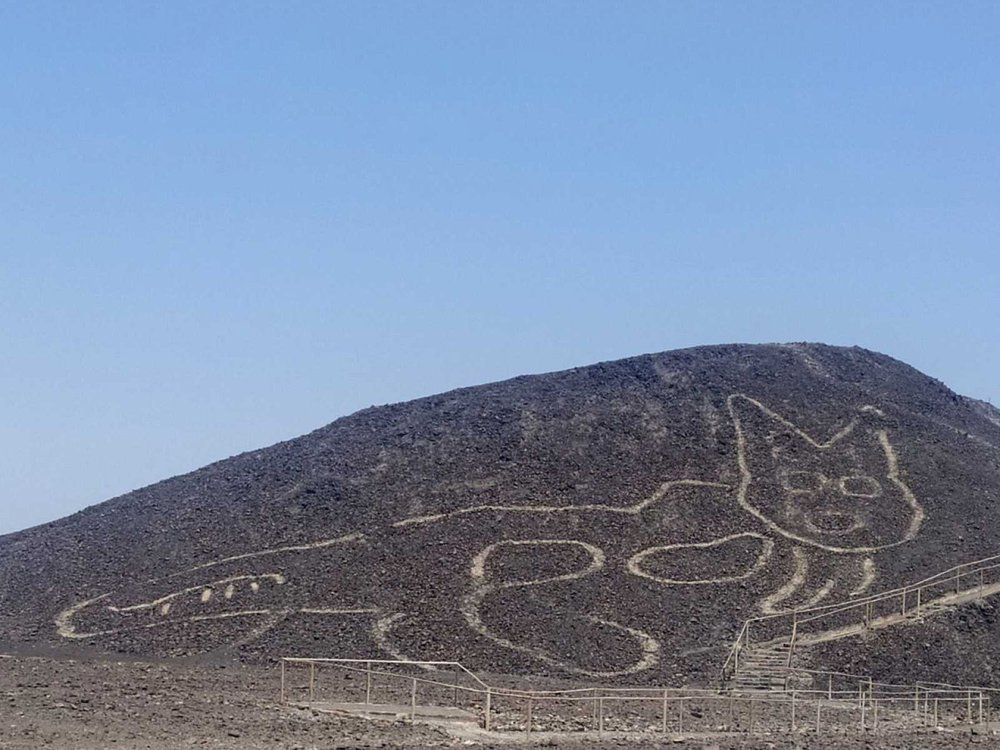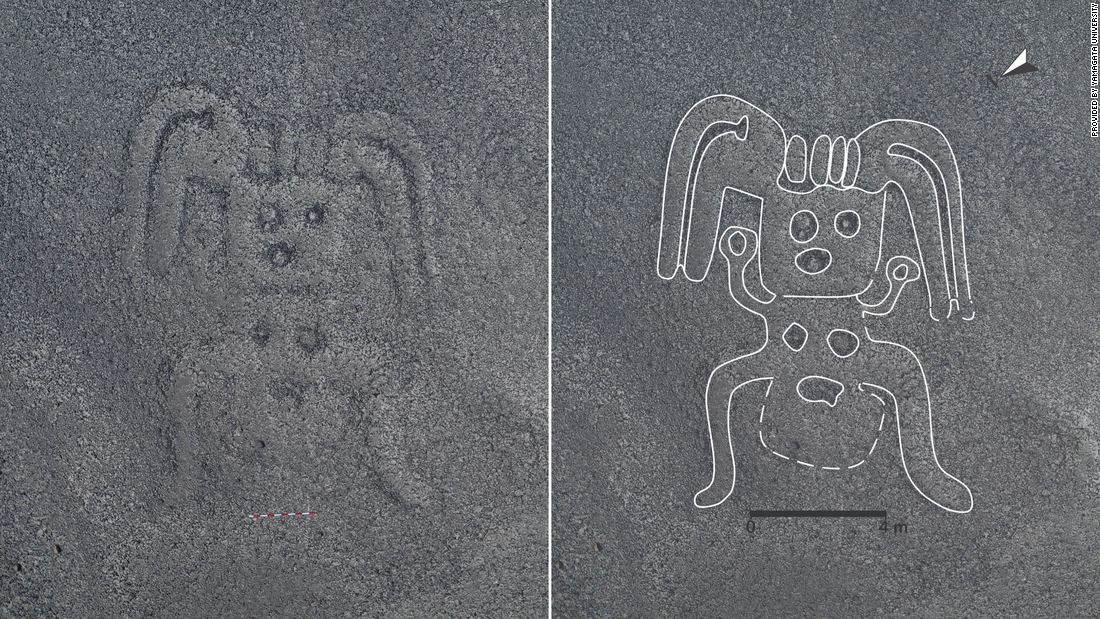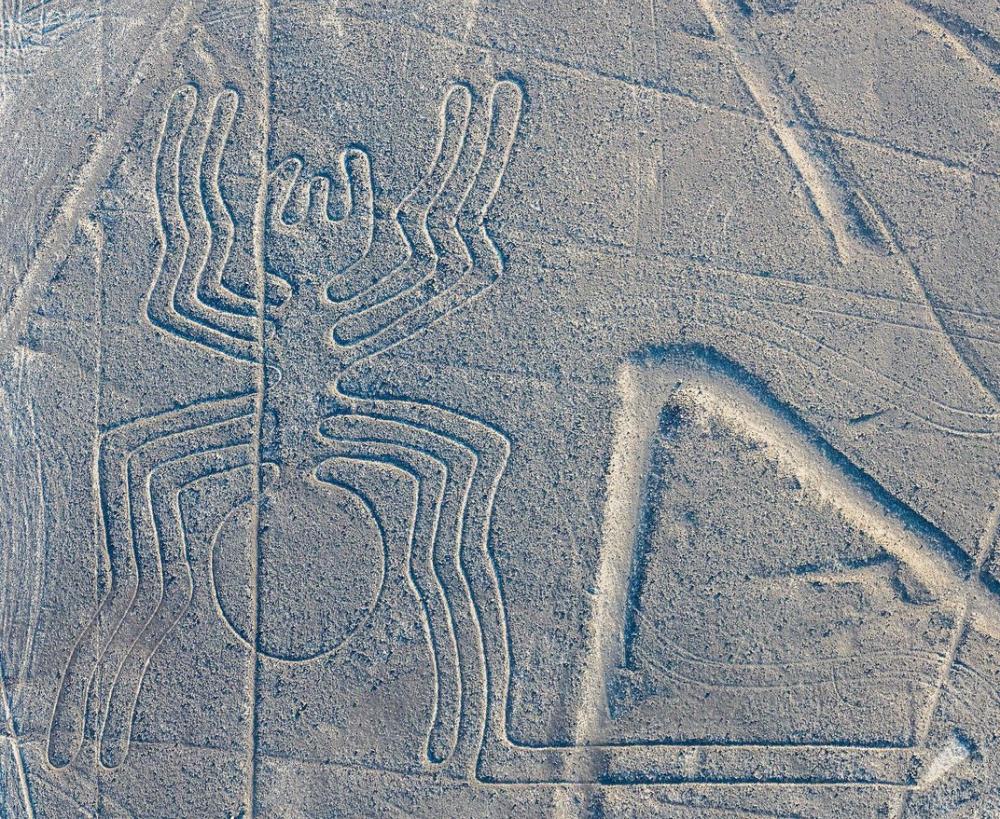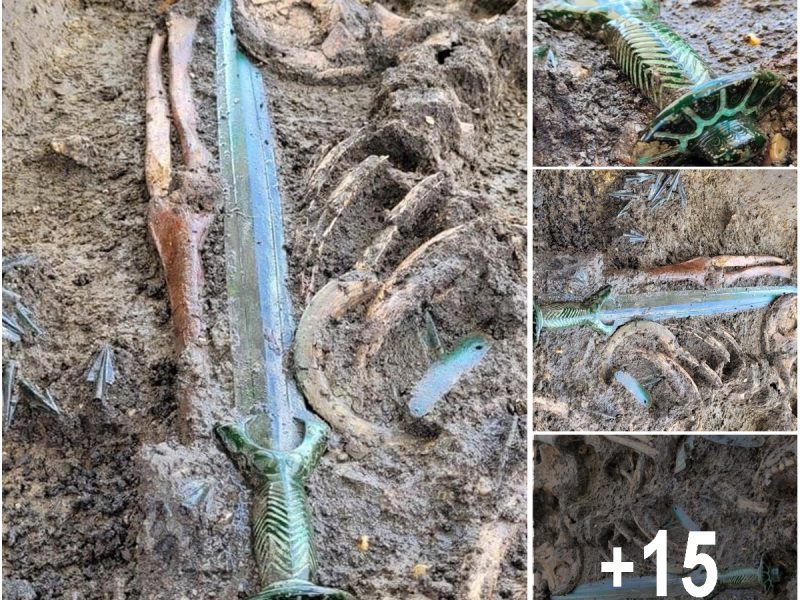Dated to between 200 and 100 B.C., the stealthy geoglyph is thought to be older than any others previously discovered in Peru’s Nazca region.

“[It] was about to disappear because it’s situated on quite a steep slope that’s prone to the effects of natural erosion,” Peru’s Ministry of Culture explains. Peru’s Ministry of Culture

The 120-feet-long cat figure was carved into a hillside some 250 miles southeast of the Peruvian capital. It is about 120 feet long, has wide, orb-like eyes and appears to be sunning itself.
The new Nazca line etching was discovered right when it was on the brink of disappearing due to its location on a particularly steep slope, making it more vulnerable to erosion than most other geoglyphs. The hiding feline lay in secret until recently a new path leading to an observation platform was started being built (see first image above). Peru’s Ministry of Culture announced that the figure has been cleaned and preserved.

A spider-shaped Nazca line. Photo: Diego Delso
The Nazca lines are a collection of huge drawings etched into the soil by the Nazca culture between 500 BCE and 500 CE in the territory of present day Peru. Discovered by Peruvian archaeologist Toribio Mejia Xesspe in 1927, the lines were made by carving depressions into the desert floor by removing pebbles and dirt, revealing a lighter color soil beneath the reddish-brown surface.
Also known as geoglyphs, the etchings are mostly lines that run straight across the landscape, but some depict a range of animals including a monkey, spider, hummingbird, whale, fish, and also humanoids – similarly to many other prehistoric drawings.
According to a report from EFE news agency, Johny Isla, Peru’s chief archaeologist for the Nazca Lines, said that the enormous cat drawing actually predates the Nazca culture and was created during the late Paracas era around 500 BCE to 200 CE. That would make the cat the oldest geoglyph ever discovered in the area.
But why exactly did these ancient civilizations go to extreme lengths to carve gigantic symbols onto the ground? Well, we don’t know for sure, but some archaeologists have suggested that they could have served as travel signs or been intended for the viewing pleasure of deities in the sky.
We only seem to know one thing for sure: as UNESCO has pointed out, “the concentration and juxtaposition of the lines, as well as their cultural continuity, demonstrate that this was an important and long-lasting activity, lasting approximately one thousand years.”

A humanoid figure with what appears to be a face in their midsection from the newly uncovered cache of Nazca Lines. Source
Accordingly, in 1994 UNESCO designated the Nazca Lines a World Heritage Site. And with the advancement of technology, the site just keeps getting bigger as more prehistoric images are being discovered.
In 2019, for example, researchers at Japan’s Yamagata University used artificial-intelligence technology to enhance visuals of 143 line drawings, revealing outlines of living and mythical creatures, including an angular bird-like animal and a two-headed serpent.
And who knows what else we are going to find hiding there? The story of the Nazca Lines continues.

